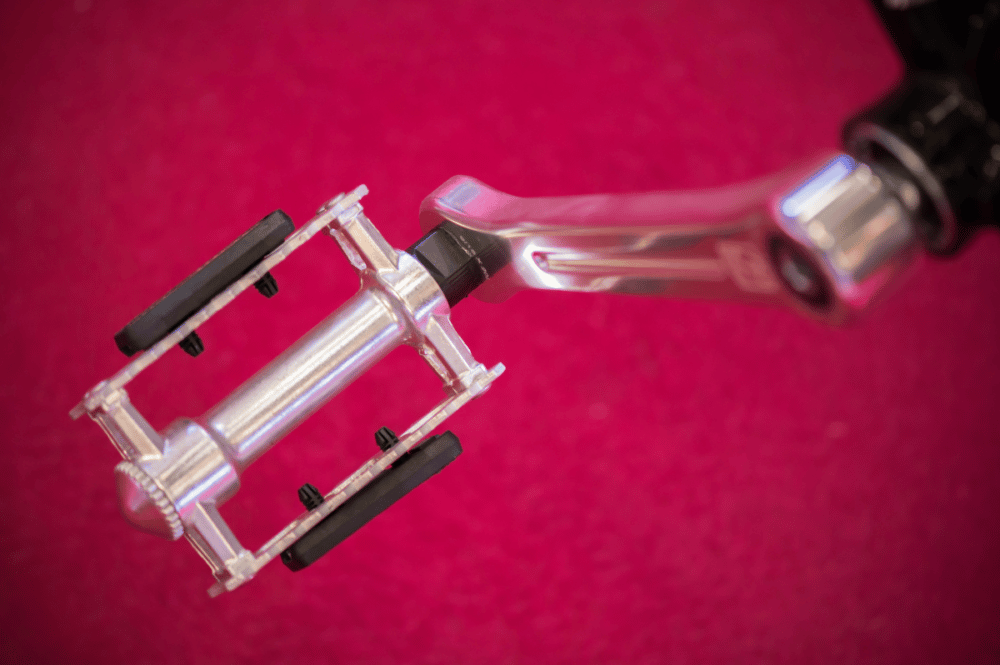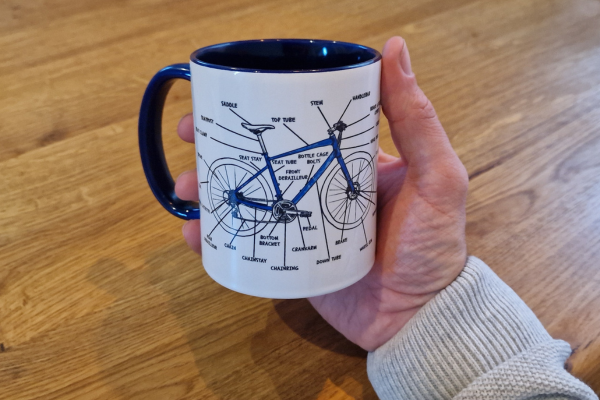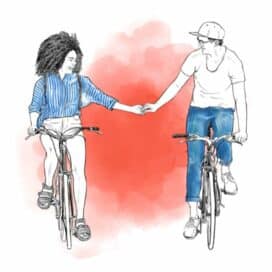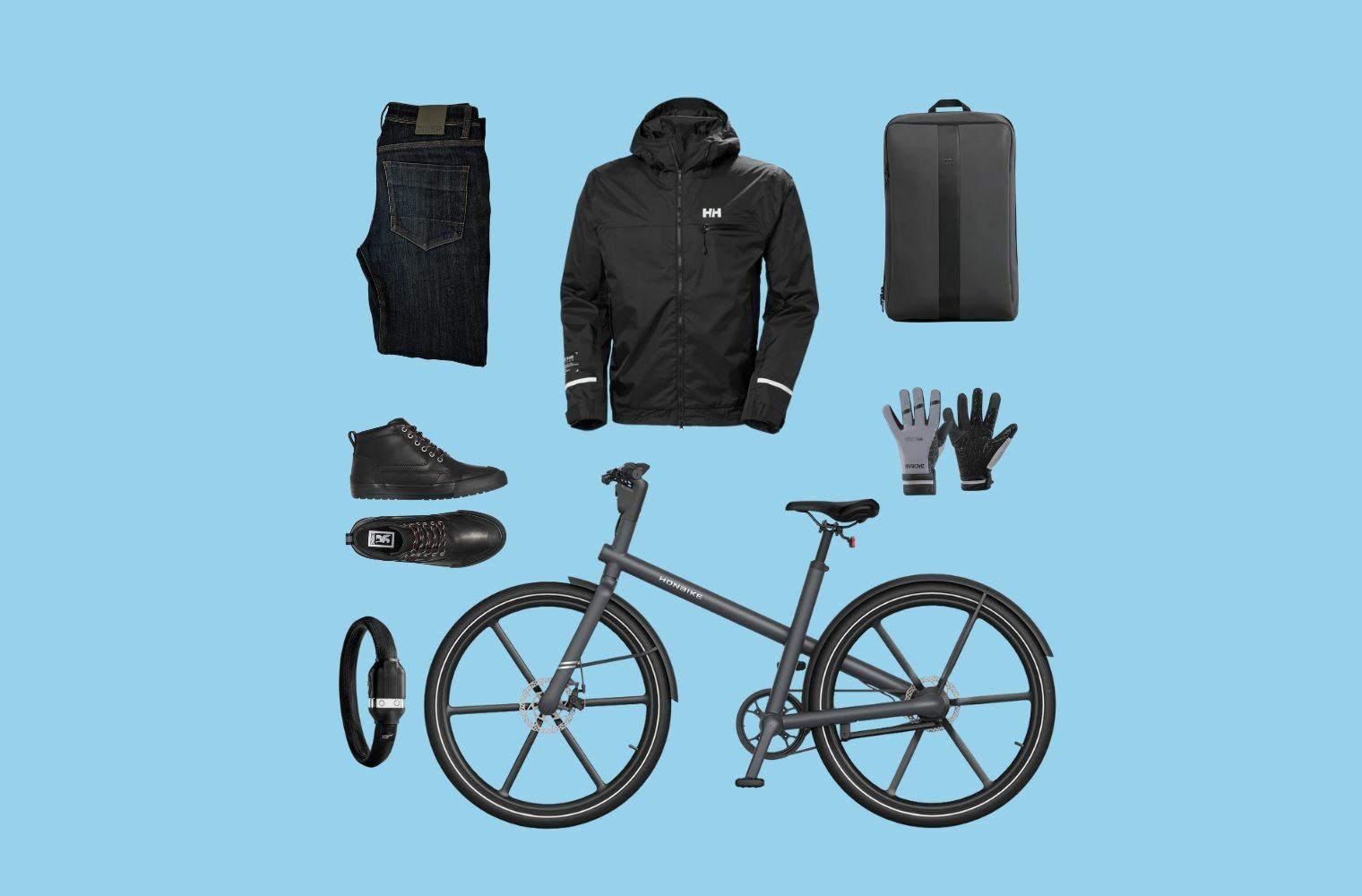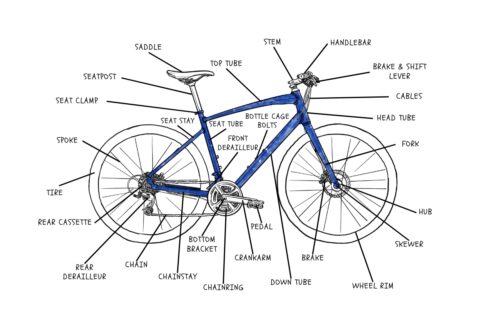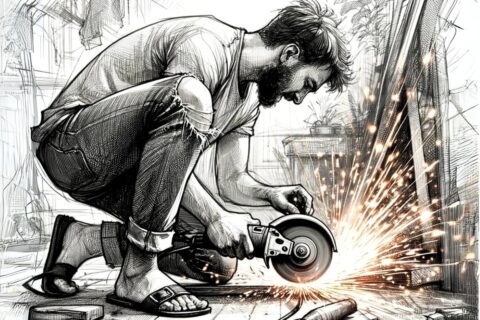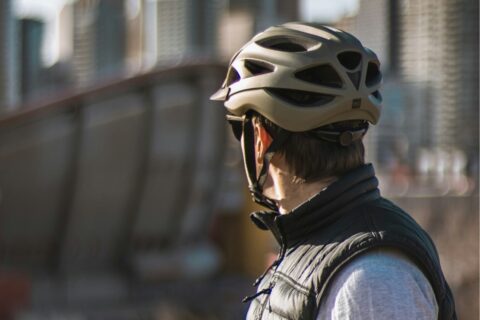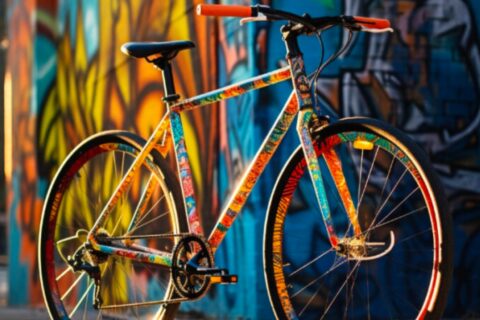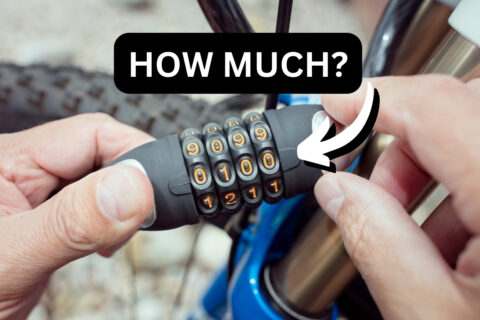This post may contain affiliate links, which help to keep Discerning Cyclist rolling. Learn more.
The Short Answer
Bike pedals come in two main types: flat pedals, which are versatile and suitable for all types of riding, and clipless pedals, which allow riders to securely attach their feet for enhanced power and efficiency. Clipless pedals require specific shoes with cleats, and pedals are reverse threaded to prevent them from loosening while riding.
Bike pedals help to convert the power of our legs into the effort needed to turn the wheels forward. They need to be comfortable for commuting and ideally, non-slip, so we can reliably step on and off as we go to and from work or study. Pedal variations owe much to the sportier side of cycling, but most of us will be happy with a standard flat pedal.
What Are the Different Types of Bike Pedals?
Commuters will be familiar with the flat, rectangular pedal from their first bike ridden as a kid. Sportier riders may have seen a stubbier version designed to house a special shoe with added cleats. Then there are smaller, almost round models designed to take a shoe with the cleat built in.

Clipless Pedals
Cycling is indebted to the sport of skiing and a suave entrepreneur for bringing clipless pedals to the masses. Prior to the canny marketing techniques of Bernard Tapie and the Look pedals with no binding, sporting cyclists used a metal toe-clip cage system fixed to the pedal and slipped a shoe inside the clip.
Some track cyclists used a ‘quill’ system of pedal instead – a shoe with a flat metal or plastic plate screwed on, rested on one side of the pedal, weighed down with a ‘quill’ to take the plated shoe.
Both the quill and the toe-clip version relied on the rider leaning down to manually loosen the strap going around the cage when they needed to step off. A clipless pedal accepts a cleat (fixed to the sole of the shoe) into a housing and locks it in. An outward rotation of the foot from a pivoting heel quickly unlocks it.
The locking in of the foot to the pedal helps the earlier application of downward pressure onto the pedals and hence, more power per pedal stroke. Clipless pedals have been adopted by racing cyclists, gravel riders and active mountain bikers. The mountain bike version clips in from either side and is smaller, to attract less mud. The road bike version, with the exception of SPEEDPLAY, clips in from one side.
There is a school of thought that with clipless pedals, the very best cyclists can also pull on the pedal during the upstroke for maximum efficiency, getting more from each stroke. This is rare and in most cases the best you can hope for with a clipless pedal is reassurance that your foot is not going to leave the pedal when you need it the most.
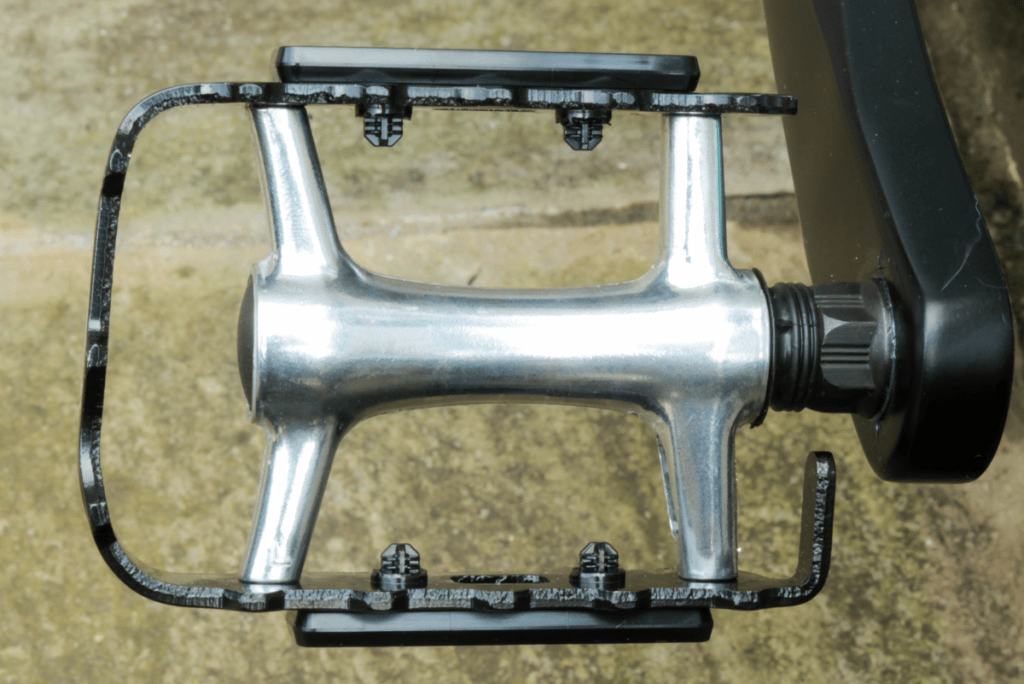
Flat pedals
Flat pedals are found on most bikes as they leave the factory. They are designed to be simple to use, are two-sided and broad so that most of the sole of your shoe can fit onto them. They are designed to be worn with any type of regular footwear.
Flat pedals might often be made of a compound plastic or of metal. Some come with amber reflectors to suit local regulations. Their key attribute is their utility. They can be used with ordinary shoes, can be fitted with toe clips if necessary and fit most bike ranges.
They are mainly used without clips because most riders need to touch the floor with their feet on a regular basis. Imagine having to think about rotating your foot to unclip or reach down and loosen a strap on a pedal down by your lower calf at every stop. Flat pedals do away with this.
Clipless vs Flat Pedals
| Clipless | Flat |
| You can lock in your foot, in a fixed position, to one side of a pedal bed. | Foot is free to float loosely on either side of the pedal. |
| Intended to be used with a special cleat, screwed into two or three holes in a specific shoe type. Hard to walk in the shoes when off the bike. | Any shoe can be worn – easy to step on and off. No special cleats, or screws needed. |
| You have to clip out, or rest on a fixed object when coming to a stop, to avoid toppling over. | Simple ‘step-off’ from the pedals when coming to a stop. |
| Your foot is stuck in one position on the pedal, albeit with a small degree of front to back, side to side of ‘float’. This can put pressure on other joints. | You can move your foot all around the pedal as you move. There is little or no additional pressure on other joints. |
Which Bike Pedals Do I Need?
Most commuters will need flat pedals on their bikes. The ease of stepping on and off the pedals as you come to a halt, or slow down gives them the edge over other types. A clipless pedal can be used for the same purpose but is much smaller and harder to rest your foot on comfortably and for a long time.
Most commuting bikes come with flat pedals included. That’s a good sign of what you need. Most sporty bikes come with no pedals and an expectation that you want to add clipless pedals. Chances are you will take them off your outgoing sporty bike.
Bicycle Pedals FAQs
Are Bike Pedals Universal?
Different pedals are designed for different types of bike riding. The flat pedal is the most universal type. This type is used for all types of riding most comfortably. A clipless road or mountain bike pedal is designed for specific types of use. You can commute in them – with more difficulty.
Bike pedal sizes depend upon the thread which the crank arms will accept. The age of the bike is the main factor. The 9/16 20 TPI size will be found on most adult bikes these days. Your local bike shop can help if you have any questions and if you don’t have digital measuring calipers.
Are All Pedals the Same Size?
The shape and area of the bed that you put your foot on differs from pedal to pedal. Sports design influences this. For comfort, flat pedals have a large, wide base and you can use both sides. A clipless racing mountain bike pedal is no larger than an egg-cup, to attract the least amount of dirt.
Why Are Clipless Pedals Called Clipless?
In order to stand out from existing toe-strap and clip models, manufacturers needed a catchy title, hence clipless. The name does not refer to the action of clipping in and out of the pedal. The sleek design with no cages or housing became easily identified and synonymous with cycle sports teams.
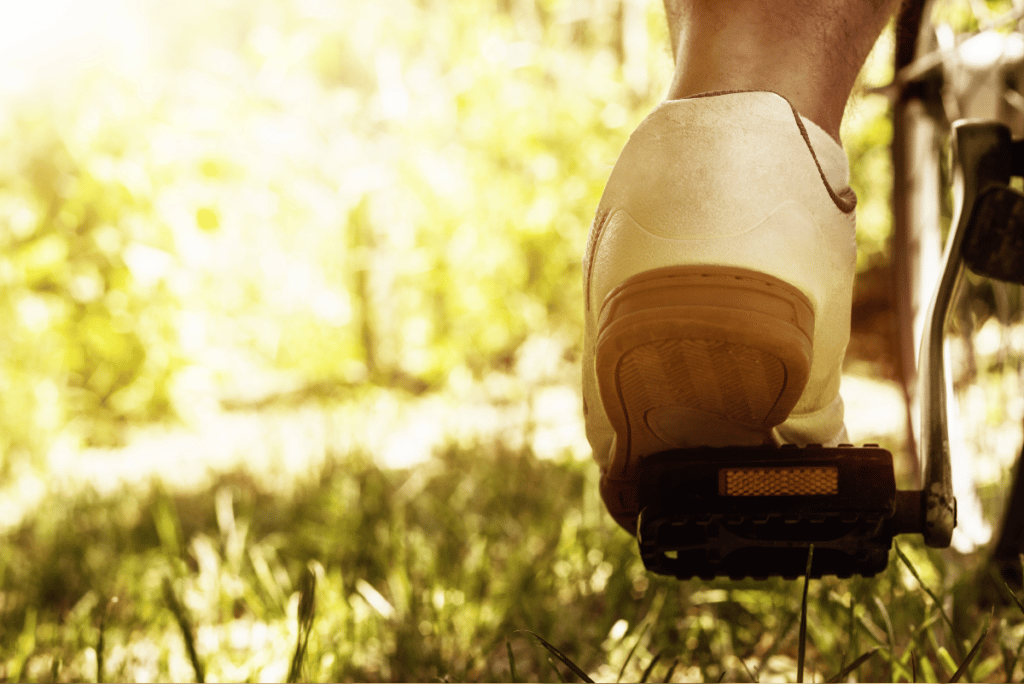
Are All Clipless Pedals and Shoes Compatible?
No. Clipless pedals require specific cleat systems to house on the bed. Shimano pedals take the Shimano cleat, and Look and Speedplay need their own cleat. Clipless shoes are designed to take one, or the other, type of cleat. They have two (usually for off-road use) or three bolts (road bikes).
The two-bolt system is manageable to walk-around in and usually made of metal, whereas the three-bolt system, for road cycling, is designed for on-the-bike use only. They are ungainly to walk around in and made of plastic, so also wear down much more quickly when you walk around.
The two-bolt system is better for those sportier commuters who want to extend their journeys off road onto gravel or trails. Their compatibility is with mountain-bike style clipless pedals with two sides for entry and a (slightly) easier clip out for when an emergency foot down is needed.
Most commuters with a clipless system should probably go for the two-bolt system and think about a clipless shoe to round that system off. You can buy some pretty snazzy two-bolt clipless shoes that would suit any occasion, including the catwalk. Just be aware that some of these are designed for urban use and may not be ideal for off-road in wet and muddy conditions.
What Does SPD Mean in Pedals?
SPD stands for Shimano Pedaling Dynamics. Invented for the mountain bike market, it’s a clipless system connecting the pedal and the outsole of a specific shoe. There is an SPD style for all off-road riding – casual trails to fast downhill. Don’t confuse it with the road-specific SPD-L system.
Are Bike Pedals Reverse Threaded?
Bike pedals are reverse threaded. The action of tightening and loosening is the opposite to most threaded systems. They self-tighten as you ride and shouldn’t fall out. It may also be a hangover from when you back-pedalled to brake. If you back pedal with a standard thread pedal, it falls out.
